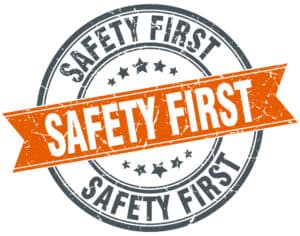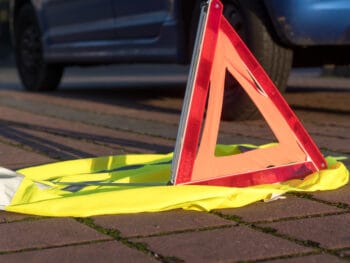
Employees will understand that the employer has their best health interests at heart. This can develop stronger employee loyalty, reduce injuries, and increase production, resulting in less employee turnover and training. Many more positives can develop, which will lead to a better bottom line.
Click Link to Access Free PDF Download
“4-Step Sequence For Effective Employee Screening, Hiring, & Placement”
Injuries Cost:
A weak or non-enforced safety program will allow for job injuries that can cause these and more risks:
- Loss of life.
- Permanent Disabilities.
- Lost Production.
- Employee re-training or replacement.
- Lost income.
- Health Exposures that may not be covered by insurance.
- Possible damages to machines or equipment.
- Increased insurance premiums.
In addition to these few noted visible items, hidden costs such as employee unrest that results in poor production will occur. A good program can limit or avoid such exposures.
Starting a Safety Program:
Safety is complex, detailed, and demanding. It can be accomplished using scientific processes and measurements. An entire profession of Safety Engineering has developed with college degrees available. Due to the specialty of this industry, it is wise to use the services of a Professional Safety Engineer.
All safety programs need to meet OSHA requirements. There may be flaws in OSHA rules and regulations that may not meet or be conducive to the employer’s industry, and OSHA has few regulations that can be imposed for employee violations. An expert safety engineer will know what needs to be done for employer compliance and employee rights.
A safety engineer should carefully study each job function. The following are a few items to consider:
- Machines: for safety guards, emergency shut-off switches, age, and current state-of-the-art changes or modifications. Use manufacturer representatives to assist and recommend modifications.
- Ergonomics for workstations. They should be designed for comfort and efficiency.
- Time elements for exercise and rest breaks from sedentary operations.
- Full safety inspections for all vehicles to ascertain proper roadworthiness.
- Comfortable assembly line speeds.
- Toxic Exposures.
- Environmental items like lighting, ventilation, heating, and air-conditioning.
Consultations with legal, union, management, and other forces should be obtained during and after the study. Such input will help with the implementation and enforcement of the program. When these units know they had a part in the program development, they will be more cooperative and receptive to compliance.
The Safety Engineer, using all data from the study and the consultations, will then write a comprehensive program. The resulting written program should be reasonable, concise, and understood by all employees. There should be incentives and rewards for compliance. Conversely, penalties and disciplinary steps should be included.
Implementation, Monitoring, and Evaluation:
Simply passing out program copies to employees may not reach the desired result. Human nature shows that most employees will only glance at it. It will then be put someplace and forgotten.
Gather employees into groups of 10 to 15 persons and pass out the program to all. The Safety Engineer or person charged with enforcing the program should then go over all aspects using the written program as a text.
Answer all questions and concerns expressed by the employees. If the comment or concern is valid, make adjustments accordingly.
Have all employees sign an agreement that they attended the training, understood it and will comply.
This document can later be used for any disciplinary measures.
Once the program takes effect, the Safety Person should make as many rounds and inspections as are reasonable or necessary to ensure all employees are in compliance. Those employees not in compliance must be dealt with promptly and appropriately. Post nameless violations on the employee bulletin board. “Example Safety Violations 6/2/15. Three employees were cited for not wearing safety glasses. Each disciplined according to rule 3 in safety equipment violation.”
Minor infractions should have warnings. Establish stricter penalties for multiple warnings.
Any safety violation that results in injury to self, another employee, or a customer, damages property or reduces production should have penalties from time off without pay to termination.
Once a month, the Safety Person should meet with management. Review compliance, violations, penalties, disciplines, rewards, injuries, and any other aspects in focus. If the program does not develop a trend for reduced losses and cost seek out the areas of failure for corrective measures.

Contact: mstack@reduceyourworkerscomp.com.
Workers’ Comp Roundup Blog: http://blog.reduceyourworkerscomp.com/
©2022 Amaxx LLC. All rights reserved under International Copyright Law.
Do not use this information without independent verification. All state laws vary. You should consult with your insurance broker, attorney, or qualified professional.








